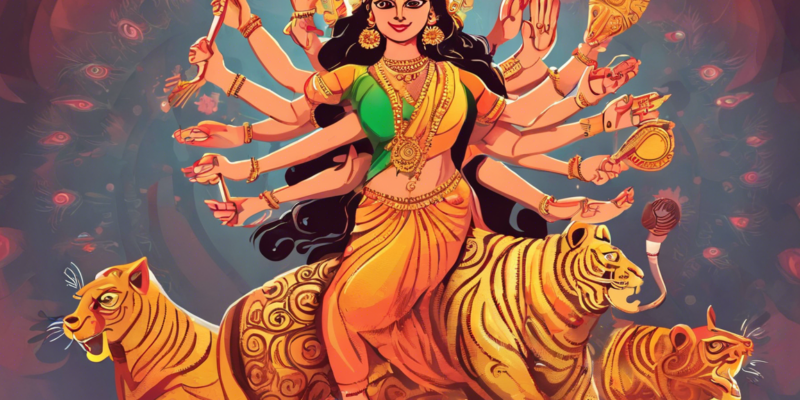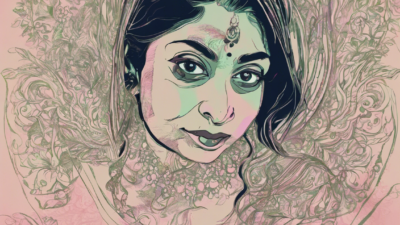Introduction
Durga Puja, also known as Sharadotsav, is one of the most significant Hindu festivals celebrated with immense fervor and devotion, primarily in the Indian state of West Bengal, and also in other parts of India and across the world. The festival honors the goddess Durga, who symbolizes good triumphing over evil.
History of Durga Puja
Durga Puja has its roots in Hindu mythology, where it is believed that Goddess Durga, an embodiment of divine feminine power, defeated the buffalo demon Mahishasura after a fierce battle that lasted for nine days and nights. The victory of Durga is celebrated during Durga Puja, which usually falls in the month of Ashwin (September-October) according to the Hindu calendar.
Significance of Durga Puja
Durga Puja is not just a religious festival but a cultural extravaganza that brings together people of all ages and backgrounds to celebrate the victory of good over evil. The festival is a time of joy, feasting, socializing, and artistic expression. It is also a time for introspection and spiritual renewal for many devotees.
Preparations for Durga Puja
The preparations for Durga Puja usually start months in advance, with committees formed to organize the festivities. The most important aspect of the preparations is the construction of the pandals, temporary structures where the idol of Goddess Durga and other deities are installed. The pandals are adorned with elaborate decorations, themes, and lighting to create a mesmerizing ambiance.
Rituals and Celebrations
Durga Puja is celebrated over a period of five days, starting from Mahalaya, which marks the beginning of Devi Paksha, and culminating in Vijayadashami, the day of victory. The rituals during these days include prayers, offerings, cultural programs, traditional dances (‘dhunuchi naach’), and processions. On Ashtami (the eighth day), devotees offer prayer to the goddess, followed by pushpanjali, where flowers are offered as a symbol of respect.
Culmination of Durga Puja
Vijayadashami, also known as Dussehra, is the final day of Durga Puja when the idol of Goddess Durga is immersed in water, symbolizing her return to her celestial abode. This process, known as “visarjan,” is accompanied by music, chanting, and a grand procession. The immersion of the idol is a bittersweet moment for devotees as they bid farewell to the goddess and await her return next year.
Global Celebrations
While Durga Puja is most prominently celebrated in West Bengal, it is also observed with great enthusiasm in other parts of India, such as Assam, Odisha, Bihar, and Delhi. Additionally, Durga Puja has gained international recognition, with elaborate celebrations held in countries like the United States, United Kingdom, Canada, Australia, and Bangladesh, where a large Bengali diaspora is present.
Economic Impact
Apart from its religious and cultural significance, Durga Puja also has a significant economic impact. The festival boosts local businesses, artisans, craftsmen, and the hospitality sector. The demand for decorations, clothing, food, and other goods increases during this time, providing a much-needed economic fillip to many.
Environmental Concerns
While Durga Puja is a joyous occasion, it is essential to address the environmental concerns associated with the festival. The materials used in making the idols, such as plaster of Paris and chemical paints, can harm water bodies when immersed. Efforts are being made to promote eco-friendly idols made from biodegradable materials and natural colors to reduce the environmental impact of the festival.
FAQs
1. What is the significance of Dhunuchi Naach during Durga Puja?
Dhunuchi Naach is a traditional dance form performed with a clay pot (dhunuchi) filled with burning aromatic substances like camphor or coconut husk. It is a form of offering to the goddess and is believed to purify the environment and please the deity.
2. Why is sindoor (vermilion) offered to Goddess Durga during Pushpanjali?
Sindoor is a symbol of marital bliss and is offered to Goddess Durga as a mark of devotion and respect. It is believed to bring blessings and prosperity to the devotees.
3. What is the significance of Kumari Puja during Durga Puja?
Kumari Puja involves worshipping young pre-pubescent girls as manifestations of the goddess Durga. It is believed to invoke the divine feminine energy and seek blessings for protection and prosperity.
4. How can one participate in Durga Puja celebrations outside India?
Many cities across the world host Durga Puja celebrations organized by local communities or cultural associations. One can actively participate by attending puja ceremonies, cultural programs, and feasting, thereby experiencing the essence of the festival.
5. What are some traditional delicacies enjoyed during Durga Puja?
During Durga Puja, devotees indulge in a variety of traditional Bengali delicacies such as luchi (deep-fried bread), khichuri (khichdi), labra (mixed vegetable), chingri maacher malai curry (prawn curry), and mishti (sweets) like rasgulla, sandesh, and pantua.
In conclusion, Durga Puja is not just a festival but a celebration of faith, culture, art, and unity. The festival brings people together in joyous harmony, transcending boundaries of caste, creed, and social status. It is a time to reflect on the victory of good over evil and seek blessings for a prosperous and harmonious life. As the grandeur of Durga Puja unfolds year after year, it continues to captivate the hearts of millions worldwide, embodying the spirit of devotion and festivity.




